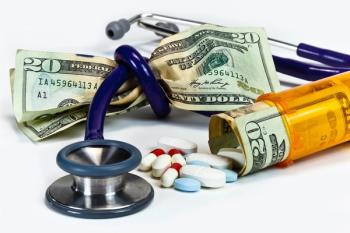
Exclusive survey: Practice expenses
Our Continuing Survey lets you take a closer look at the costs of doing business, from automobiles to utilities.
Exclusive Survey
Practice expenses
Our Continuing Survey lets you take a closer look at the costs of doing business, from automobiles to utilities.
By Gail Garfinkel Weiss
Senior Editor
Primary care physicians spent more than half of their 2002 practice revenue on operating expenses, according to the latest Medical Economics Continuing Survey, which samples MDs and DOs in office-based practice. Doctors in the specialty fields we analyzed invasive and noninvasive cardiology, gastroenterology, general surgery, and orthopedic surgery fared a bit better. But even those doctors spent from 43 to 50 percent of their earnings on overhead.
The biggest outlay was for office payroll, which easily outpaces the other two high-priced items: rent (or mortgage payments) and malpractice insurance premiums. "Without question, the greatest rise in expenses in California and Arizona over the past 24 months has been related to staffing and insurance," says Judy Capko, a consultant in Thousand Oaks, CA.
"Workers' compensation has nearly doubled, and unemployment costs are increasing even more rapidly," she adds. "Some practices are reducing fringe benefits and limiting pay hikes to the increase in the Consumer Price Index."
The situation is the same in the Northeast. Rising health insurance costs are pushing staff expenditures skyward, according to Kenneth Bowden, a consultant in Pittsfield, MA. "It used to be a fairly minor line item; now it's way off the charts. As a result, some doctors are asking employees to pay as much as 50 percent of their health insurance premiums." Malpractice costs, too, are "out of control," Bowden notes, "especially in Connecticut and Massachusetts, to the point where it's driving doctors out."
Overhead tends to peak during the "middle" practice years, according to Will Latham, a consultant in Charlotte, NC. "You typically get a U-shaped curve because in the early and late years of practice, revenue production is lower, resulting in higher overhead percentages. During the middle years, though, doctors spend and earn more, so overhead percentages are lower."
But lower percentages aren't always a good sign. "Even though the solo and expense-sharing practices show lower overhead percentages than larger groups, they're not necessarily better off," Latham says. "Many small practices are 'anorexic' and aren't doing the things they need to survive and thrive on a long-term basis."
Indeed, the "penny-wise, pound-foolish" rule applies regardless of location or practice size, says Paul Angotti, a consultant in Monument, CO. "You can't just add staff and expect to make more money any more than you can cut staff and expect to save money. You need a strategic plan for the entire organization. Inherent in such a plan is a good collection strategy. The biggest problem in medical groups is their failure to collect what they have legitimately earned. Burgeoning accounts receivable commonly skew the data when you're looking at percentages of overhead."
Other findings from our survey indicate that women physicians' expenses account for 56 percent of their practice revenue, compared with 51 percent for male doctors. "Women physicians invariably generate less revenue than their male counterparts do, because they typically work fewer hours," says Bowden. "And because most practice costs are fixed, doctors who put in less time at the office shell out a higher percentage of their income to meet expenses."
The consultants do point to a few bright lights on the expense horizon:
A slow but inexorable trend toward electronic medical records and billing software has spurred a countrywide drop in billing and administrative expenses, says Angotti.
"Physicians are getting smarter about analyzing and dumping bad managed care plans, which means a significant drop in administrative expenses," Angotti notes. "For a long time, the doctor's reaction to low-reimbursing contracts was to see more patients. But overhead expenses were going through the roof because of the need to add staffers to process all those patients and claims."
The increasing use of e-mail means less money spent on postage, stationery, and telephoning, according to Bowden, who also notes that Yellow Pages advertising is giving way to Web site promotions. "Having a Web site isn't necessarily cheaper than advertising in the Yellow Pages," Bowden says, "but it gives a practice more cachet and lowers administrative costs by allowing patients to get information about the practice without calling the office."
How did your spending last year compare to that of other physicians? Check the charts and tables that follow. Our survey methodology is detailed in the Sept. 19, 2003 issue.
How much doctors spend
Overhead varies with age, experience and gender
How spending varies
around the country
How spending varies
by practice size and type
Spending on selected items, by specialty
Expenses rise with patient visits
and hours worked
The following tables are a Medical Economics Web exclusive
How spending on big-ticket items varies
. . . by practice size
How spending on big-ticket items varies
. . . by region
How spending on big-ticket items varies
. . . and by gender
Range of physicians' 2002 professional costs
Range of physicians' 2002 professional costs
Gail Weiss. Exclusive survey: Practice expenses.
Medical Economics
Nov. 7, 2003;80:31.
Newsletter
Stay informed and empowered with Medical Economics enewsletter, delivering expert insights, financial strategies, practice management tips and technology trends — tailored for today’s physicians.








